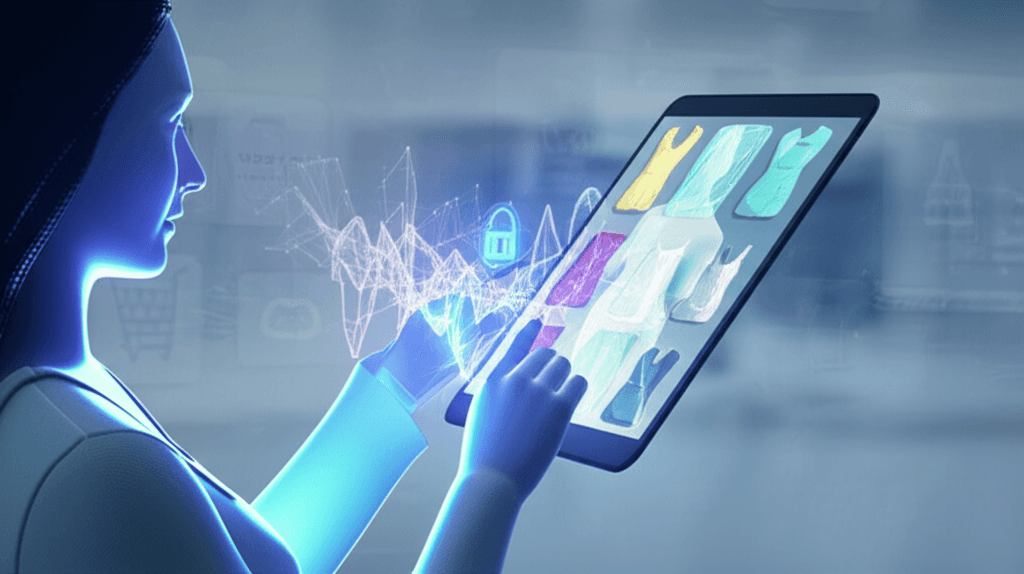Google Launches Doppl: AI App Brings Personalized Animated Try-Ons to Online Shopping
Google's AI-powered Doppl lets you create an animated digital avatar to virtually try on clothes, transforming online shopping.
June 27, 2025

Google has entered the burgeoning virtual try-on market with the launch of Doppl, an experimental artificial intelligence application designed to change how consumers shop for clothing online.[1][2] The app, currently available to users in the United States on both iOS and Android, allows individuals to see how garments might look on them by creating a digital, animated version of themselves.[2][3] This move signals Google's deeper push into AI-driven e-commerce, building on its previous virtual try-on initiatives and positioning itself within a rapidly growing technology sector.[4][5]
Doppl operates by using a photo uploaded by the user to generate a personalized digital avatar.[2][4] Consumers can then select clothing items from various sources, including screenshots from social media, photos from local stores, or images found online, and the app's AI will render how those clothes would appear on the user's digital counterpart.[1][6] A key feature that distinguishes Doppl from earlier technologies is its ability to convert static images into short, animated videos.[1][7][8] This function aims to provide a more dynamic and realistic sense of how an outfit might fit and move in real life, addressing a common limitation of static virtual try-on systems.[1][4] The app allows users to try on tops, bottoms, and dresses, and to save and share their favorite looks.[1][9]
The introduction of Doppl is a significant evolution of Google's ongoing efforts in the virtual try-on space.[5] The app is an extension of the virtual try-on feature introduced to Google Shopping in May, which allowed users to see clothing on a range of models.[5][10] Doppl personalizes this experience by placing the clothing directly onto an avatar of the user.[3] As a product of Google Labs, the company's platform for experimental projects, Doppl is positioned as a tool for gathering user feedback to shape future AI applications in retail.[1][11] Google has acknowledged that as an early-stage experiment, the app has limitations; it does not currently support shoes, swimwear, lingerie, or accessories, and the company warns that the visual accuracy regarding fit and appearance is still being improved.[1][4][9] All content generated by the app includes invisible digital watermarks.
The launch of Doppl places Google in a competitive and rapidly expanding market. The virtual try-on (VTO) market was valued at over $9 billion in 2023 and is projected to grow significantly, with some estimates predicting it will reach nearly $49 billion by 2030.[12][13][14] This growth is fueled by advancements in AI and augmented reality, coupled with a rising consumer demand for more interactive and personalized online shopping experiences that can reduce the uncertainty of purchasing clothes online.[13][14][15] Retailers have found that VTO technology can increase conversion rates by up to 30% and reduce returns, a major cost for e-commerce businesses.[12][15] Early adopters in the beauty industry, such as Sephora and L'Oréal, have already seen success with similar AR-based try-on features for makeup, which has paved the way for fashion applications.[4]
However, the proliferation of AI-powered fashion apps like Doppl also raises significant questions, particularly concerning data privacy.[4] To function, these apps require users to upload personal data, including full-body photographs that contain biometric information.[4][6] This, combined with data on style preferences and shopping habits, creates detailed user profiles that could be vulnerable.[4] Google has stated that while it uses uploaded data to improve its machine learning technologies, the information is disconnected from user accounts before being reviewed by human annotators.[6] The potential for misuse, such as creating looks using images of other people without consent, also presents a challenge, though Google's policies prohibit such impersonation.[6] As this technology becomes more mainstream, the balance between personalization and privacy will become an increasingly critical issue for the industry to navigate.
In conclusion, Google's Doppl represents a sophisticated step forward in the integration of AI into the fashion retail landscape. By offering a personalized and animated virtual try-on experience, the app aims to solve a key pain point for online shoppers and provide valuable insights for the continued development of AI in commerce.[5][1] Its launch within the experimental framework of Google Labs suggests a long-term strategy to refine and potentially integrate this technology more broadly into its shopping ecosystem, which includes over 50 billion product listings on its Shopping Graph.[1][5][16] The success of Doppl and similar technologies will depend not only on their technical capabilities and accuracy but also on their ability to earn consumer trust by responsibly handling personal data. The app's performance and reception will be closely watched as an indicator of the future of AI-driven personalization in the e-commerce world.